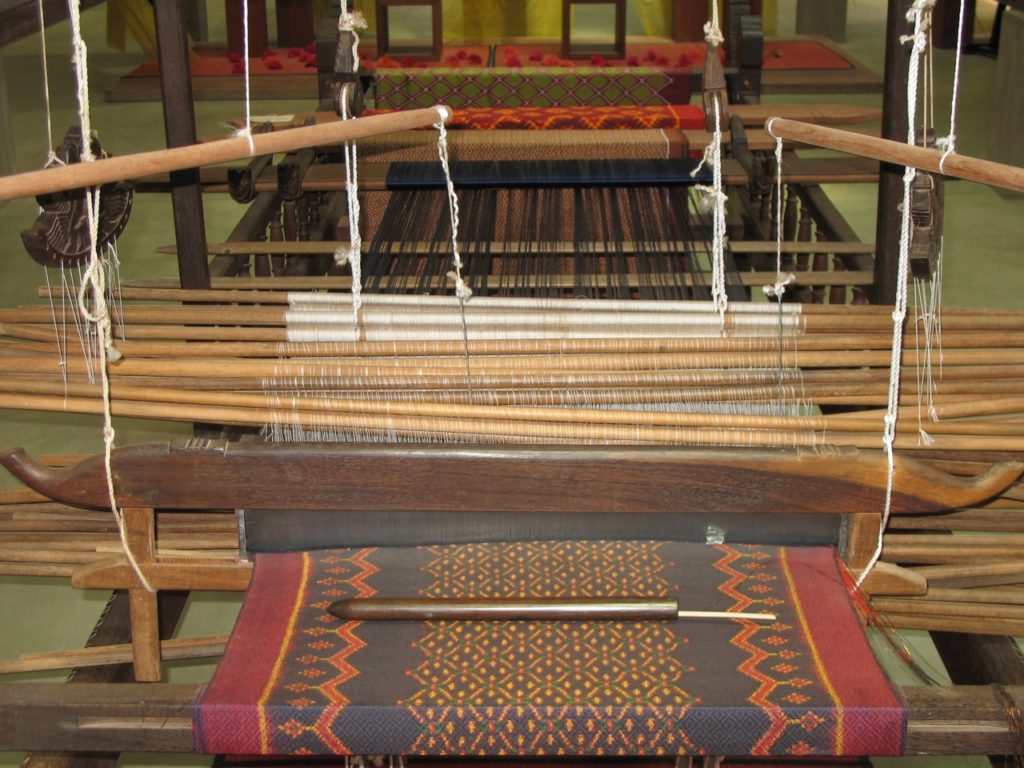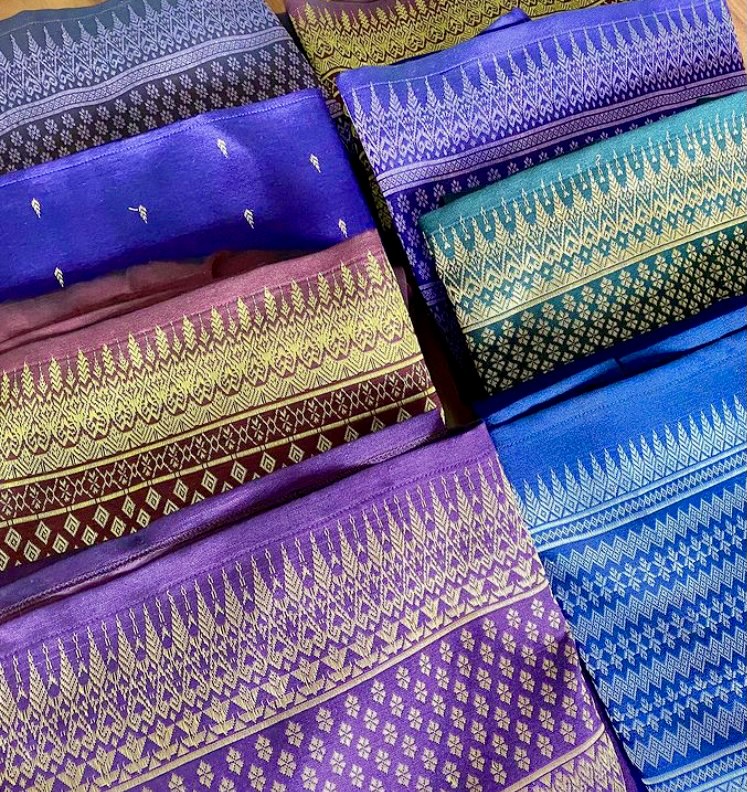Organised by DC-Cam volunteers collectively known as CamboCorp, the forum was participated by the DC-Cam team from Phnom Penh, 20 Cham Khmer Rouge genocide survivors and representatives from Turkish Cooperation and Coordination Agency (TIKA), who support DC-Cam’s Cham Silk Project.
The Cham Silk project is created by DC-Cam in 2021 and later was supported financially by TIKA through the Embassy of Turkey to Cambodia. The purpose of the project is to restore the silk—colours and patterns through the survivors’ memory and make it an income generation for the community.
DC-Cam’s goal towards this Cham Silk project is to popularise it and make it well known both domestically and internationally. It is extremely significant to preserve and recall the silk’s colours and patterns through the survivors’ memories.
Seang Chenda, Director of Kampong Cham Documentation Center, and So Farina, DC-Cam’s Deputy Director, introduced TIKA representatives to DC-Cam’s CamboCorps as well as gave them a tour around the centre.
During the forum, the TIKA representatives provided insight as to how people are linked between the past and the future by silk craftmanship.
“In the Cham Silk Project, when we are using our past knowledge on weaving and creating the design of each silk, we are projecting our creativity which could act as an accomplishment to be passed down to future generations,” read a statement from TIKA.
 “From one generation to another, the achievements that were created will be very valuable along with the occupation and talent could be passed down and be preserved. Cham’s work towards the Silk Project is very valuable as the efforts in going into creating each silk show their great determination and grit. By weaving each silk, it is projected into their memory to be remembered for future purposes.”
“From one generation to another, the achievements that were created will be very valuable along with the occupation and talent could be passed down and be preserved. Cham’s work towards the Silk Project is very valuable as the efforts in going into creating each silk show their great determination and grit. By weaving each silk, it is projected into their memory to be remembered for future purposes.”
The representative stated that it acts as “Memories of the past” as it contributes to the development of society. When conducting this research, the information gathered is useful in picking and creating a signature colour and design that best represents the Cham community. Although it is an applaudable plan, there are still gaps that need to be filled in this research.
“Hence why this forum is a great opportunity into gathering more information into filling those gaps and giving a chance for the survivors to ask questions and ease their curiosity,” said Youk Chhang, DC-Cam director.
“There are a few questions in which they have asked which include the duration and process of this project, further plans on how we plan to share the design and future collaboration with the survivors. So farina has explained briefly how there is no fixed duration to this project as we are currently gathering endless data into finding a suitable design for the Cham community.”
“Through it all, there are a few steps in this Cham Silk Project which includes the research stage where we gather needed data from historical sources and by going down to interview the villagers and learn more about each design and colour of the silk to produce a Cham representative silk colour and design. Once completed, we will get it registered with the Ministry of Commerce.”
 The next step will be the training stage where survivors could contribute by weaving their desired silk design whenever they have time and giving them equal opportunity to express their creativity, he added.
The next step will be the training stage where survivors could contribute by weaving their desired silk design whenever they have time and giving them equal opportunity to express their creativity, he added.
“It is very likely that when the results are ready, there will be further collaboration in this weaving project, and it will also be shared with the rest of the Cambodian society as well as expanding it abroad to Turkey,” Chhang said.
During the Khmer Rouge regime, the Cham minority was targeted for persecution – along with Vietnamese and Chinese – in the Khmer Rouge’s attempt to create a utopian society through purging ‘undesirables’. As Muslims, they were also religiously oppressed, with their Qurans burned and members of the community forced to eat pork.
After the fall of the ultra-Maoist, the community started to recover in 1979. In interviews with DC-Cam, the Cham survivors recalled their memories of the Khmer Rouge regime as well as their survival experiences. They also told us about their life before the Khmer Rouge and their art craft. The stories told by the survivors were part of a collective narrative and memory. When asked about Cham silk textiles, some people were able to recall this, but only a few are capable of producing the silk.
Sadly, only a limited number of textiles survived because many were lost or taken away by the Khmer Rouge during the regime. Therefore, memory is so important, and it is even more valuable when little or no artifacts remain. People tried to reconstruct their memory of the textile and recall this in a narrative setting.
According to khmertimeskh.com












